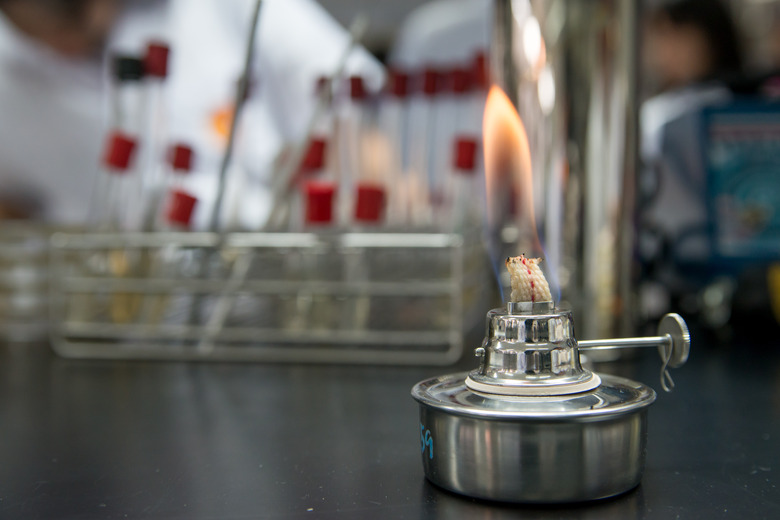How To Convert An Alkane To An Alkene
An alkene represents an unsaturated hydrocarbon with double bonds, while an alkane is a saturated hydrocarbon with only single bonds. To convert an alkane to an alkene, requires that you remove hydrogen from the alkane molecule at extremely high temperatures. This process is known as dehydrogenation.
TL;DR (Too Long; Didn't Read)
Converting an alkane hydrocarbon to an alkene involves dehydrogenation, an endothermic process in which hydrogen is removed from the alkane molecule.
Properties of Alkanes
Properties of Alkanes
Alkanes are hydrocarbons, which means they contain only carbon and hydrogen atoms. As saturated hydrocarbons, alkanes contain hydrogen in every available place. This makes them fairly non-responsive, apart from when they react to and with oxygen in the air (called burning or combustion). Alkanes contain only single bonds and have similar chemical properties to each other and trends in physical properties. For example, as the molecular chain length grows, their boiling point increases. Examples of alkanes include methane, ethane, propane, butane and pentane. Alkanes are extremely combustible and useful as clean fuels, burning to produce water and carbon dioxide.
Properties of Alkenes
Properties of Alkenes
Alkenes are also hydrocarbons, but they are unsaturated, meaning they contain carbon-carbon double bonds, for example, there are one or more double bonds between carbon atoms in the molecule. This makes them more reactive than alkanes. Examples of alkenes include ethene, propene, but-1-ene and but-2-ene. Alkenes are precursors to aldehydes, polymers, aromatics and alcohols. By adding steam to an alkene, it becomes an alcohol.
Converting Alkenes to Alkanes
Converting Alkenes to Alkanes
To convert an alkene to an alkane, you must break the double bond by adding hydrogen to an alkene in the presence of a nickel catalyst, at a temperature of around 302 degrees Fahrenheit or 150 degrees Celsius, a process known as hydrogenation.
Converting Alkanes to Alkenes
Converting Alkanes to Alkenes
Alkanes, like propane and isobutane become alkenes like propylene and isobutylene through a chemical process called dehydrogenation, the removal of hydrogen, and the reverse of hydrogenation.The petrochemical industry often uses this process to create aromatics and styrene. The process is highly endothermic and requires temperatures of 932 degrees F, 500 degrees C and above.
Common dehydrogenation processes include aromatization, in which chemists aromatize cyclohexene in the presence of hydrogenation acceptors using the elements sulfur and selenium, and the dehydrogenation of amines to nitriles using a reagent like iodine pentafluoride. Dehydrogenation processes can also convert saturated fats to unsaturated fats in the manufacturing of margarine and other foods. The chemical reactions during dehydrogenation are possible at high temperatures because the release of hydrogen gas increases the collapse of the system.
Cite This Article
MLA
Gillespie, Claire. "How To Convert An Alkane To An Alkene" sciencing.com, https://www.sciencing.com/convert-alkane-alkene-5178197/. 20 April 2018.
APA
Gillespie, Claire. (2018, April 20). How To Convert An Alkane To An Alkene. sciencing.com. Retrieved from https://www.sciencing.com/convert-alkane-alkene-5178197/
Chicago
Gillespie, Claire. How To Convert An Alkane To An Alkene last modified March 24, 2022. https://www.sciencing.com/convert-alkane-alkene-5178197/
